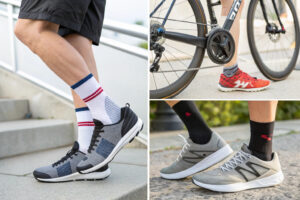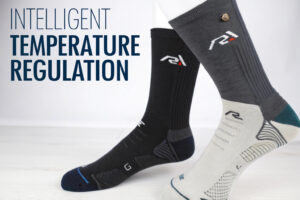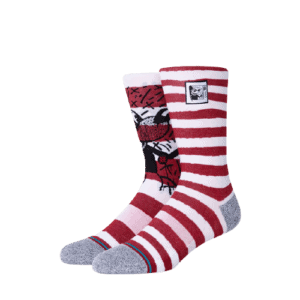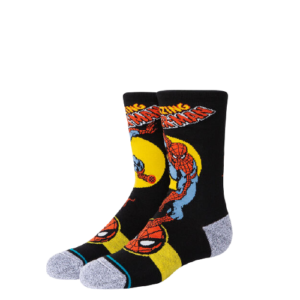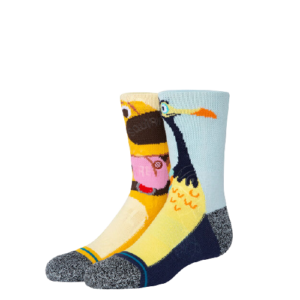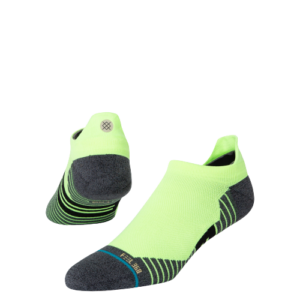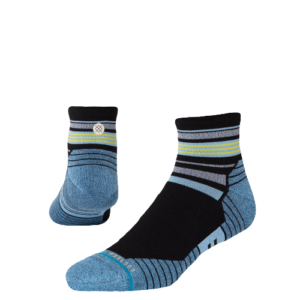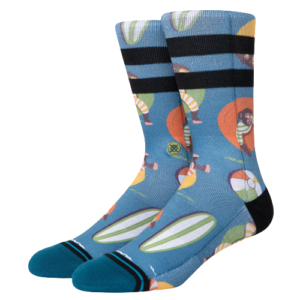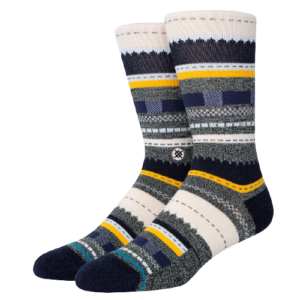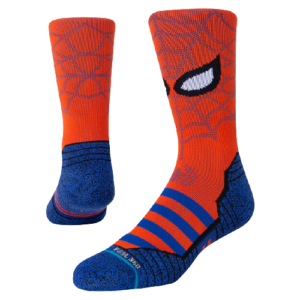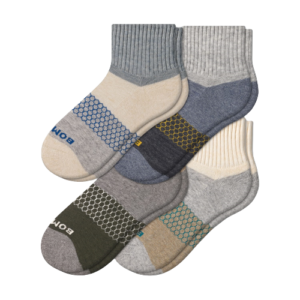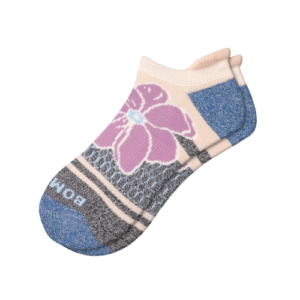As an equestrian, you know the struggle of boot chafing all too well. That painful rubbing and irritation can turn a pleasant ride into a miserable experience. Many riders suffer in silence, trying various solutions with limited success. The discomfort isn't just annoying—it can actually impact your performance and enjoyment of the sport. But what if the solution was as simple as choosing the right socks?
Over-the-calf socks prevent boot chafing for equestrians by creating a protective barrier between your skin and riding boots, ensuring the boot's interior rubs against the sock fabric rather than your skin. These specialized socks maintain their position throughout movement, distribute pressure evenly, and utilize moisture-wicking materials to reduce friction-causing sweat buildup around the calf area where boot tops typically create the most friction.
The right socks can make all the difference between an enjoyable ride and one filled with discomfort. While many riders focus on their boots, the socks you wear play an equally important role in your comfort and performance. Let's explore how over-the-calf socks specifically address the unique challenges faced by equestrians.
How Do Over-the-Calf Socks Create a Protective Barrier?
When you're spending hours in the saddle, every element of your gear matters. Over-the-calf socks provide a crucial first line of defense against the constant friction created by riding boots. Unlike shorter socks that leave skin exposed, these extended-height socks ensure complete coverage where you need it most.
Over-the-calf socks create a protective barrier by completely covering the vulnerable calf area where riding boots typically rub. The sock fabric absorbs the friction that would otherwise directly affect your skin, while specialized materials reduce the coefficient of friction between boot and leg. This dual protection system significantly decreases the mechanical irritation that causes chafing, blisters, and raw skin during extended riding sessions.
The science behind this protection lies in both the coverage and materials used. Quality over-the-calf riding socks typically use moisture-wicking fabrics that pull sweat away from your skin, keeping the area drier and reducing friction. Additionally, the seamless construction of premium equestrian socks eliminates potential irritation points that could worsen chafing issues.

What Materials Work Best for Friction Reduction?
The choice of materials significantly impacts how effectively socks reduce friction. Merino wool stands out as an exceptional choice for equestrian socks due to its natural moisture-wicking properties and soft texture that minimizes friction. Unlike traditional cotton that retains moisture and increases friction, Merino wool maintains its protective qualities even when damp. Bamboo-derived fabrics offer similar benefits with enhanced breathability, making them ideal for riders in warmer climates.
Modern synthetic blends incorporating spandex or elastane provide the necessary compression and stay-up properties while maintaining smooth surfaces that reduce friction. These technical fabrics often feature brushed interiors that create a cushion of air between your skin and the boot, further minimizing direct contact and the resulting chafing.
How Does Sock Height Impact Chafing Prevention?
The height of over-the-calf socks plays a crucial role in chafing prevention that many riders underestimate. Standard crew socks typically end just below the calf muscle, exactly where riding boots often create the most pressure and friction. Over-the-calf designs extend several inches above this problem zone, ensuring complete coverage throughout the entire range of riding motions.
The superior height also allows for better integration with riding breeches or tights, creating a seamless transition between layers rather than an exposed gap where boot tops can dig directly into skin. This extended coverage becomes particularly important during disciplines that require significant leg movement, such as jumping or dressage, where shorter socks frequently slip down and create direct skin-to-boot contact.
What Features Make Socks Stay Up During Riding?
There's nothing more frustrating than socks that won't stay in position during a ride. As your legs constantly adjust to your horse's movements, socks that slip down create immediate chafing issues while compromising both comfort and professionalism in the saddle.
Specialized over-the-calf riding socks stay up through strategic elastic compression bands, silicone grip patterns along the inner cuff, and graduated compression technology that applies gentle pressure without restricting circulation. These features work together to maintain the sock's position throughout various riding disciplines and leg movements, preventing the slippage that leads to direct skin contact with boot interiors.
The effectiveness of stay-up technology varies significantly between brands and designs. Quality equestrian socks typically feature medical-grade compression levels that provide support without being restrictive. The best options incorporate seamless transitions between different compression zones, with stronger hold at the top that gradually decreases down the calf.

How Does Compression Technology Enhance Fit?
Compression technology does more than just keep socks in place—it actively enhances riding performance and comfort. Graduated compression socks improve blood circulation in the calves, reducing fatigue during long riding sessions. This enhanced circulation also helps prevent muscle vibration, which can contribute to sock slippage and subsequent chafing.
The science behind compression fit involves precise engineering of fabric tension and recovery properties. Quality riding socks maintain consistent compression throughout their lifespan, unlike cheaper alternatives that lose elasticity after repeated washing. This durable compression ensures the protective barrier remains intact ride after ride, making them a worthwhile investment for serious equestrians.
What Role Do Non-Slip Elements Play?
Non-slip elements represent the unsung heroes of effective riding sock design. Silicone grip patterns, elasticized bands, and specialized knit structures along the inner cuff create micro-resistance against the skin that prevents downward migration. These elements must strike a perfect balance between secure hold and comfort, avoiding the too-tight feeling that can create its own circulation issues.
Advanced designs often incorporate textured grip zones that increase surface area contact without increasing pressure points. The best non-slip systems remain effective even when damp with sweat, a crucial consideration for riders in hot climates or during intense training sessions where moisture would compromise simpler stay-up designs.
How Do Moisture-Wicking Fabrics Prevent Irritation?
Moisture accumulation represents one of the primary contributors to boot chafing, yet many riders overlook this critical factor. When sweat accumulates between skin and boot, it dramatically increases friction coefficients while softening skin tissue, making it more susceptible to abrasion and blister formation.
Moisture-wicking fabrics prevent irritation by rapidly moving sweat away from the skin's surface to the sock's outer layers where it can evaporate. This process maintains a drier interface between sock and skin, significantly reducing the friction that causes chafing. Advanced moisture management technologies can pull moisture up to 50% faster than traditional materials, keeping equestrians comfortable throughout extended riding sessions.
The effectiveness of moisture-wicking technology depends on both fiber selection and knit construction. Advanced knitting patterns create capillary action that literally pulls moisture through the fabric, while hydrophobic and hydrophilic treatment variations optimize this transport process specifically for the unique demands of equestrian activities.

What Are the Most Effective Moisture-Wicking Fibers?
Not all moisture-wicking fibers perform equally under riding conditions. Merino wool naturally absorbs up to 30% of its weight in moisture without feeling wet, making it exceptionally effective for riders who experience variable intensity levels. Synthetic options like polyester and nylon often incorporate microscopic channels that literally propel moisture outward through capillary action.
Bamboo-derived viscose has gained popularity for its exceptional breathability and natural antimicrobial properties that prevent odor buildup between washes. The most advanced options often blend multiple fiber types to create synergistic effects, such as wool-polyester blends that combine natural temperature regulation with durable moisture transport capabilities.
How Does Moisture Management Reduce Friction?
The relationship between moisture management and friction reduction involves both mechanical and chemical processes. Dry materials naturally slide against each other with less resistance than damp surfaces, a principle that applies equally to sock-skin interactions. By maintaining a drier environment, wicking fabrics reduce the adhesive forces that increase friction between moving surfaces.
Additionally, reduced moisture levels prevent the maceration (softening) of skin that makes it more vulnerable to abrasion damage. This dual protection—reducing both friction coefficients and skin vulnerability—makes moisture-wicking technology one of the most valuable features in chafing prevention for equestrians of all disciplines and skill levels.
What Design Elements Address Equestrian Needs?
Equestrian socks require specialized design considerations that ordinary athletic socks simply don't address. The unique pressures, movements, and equipment interactions of riding demand thoughtful engineering that goes beyond basic sock construction.
Equestrian-specific sock designs address riding needs through reinforced high-impact zones, seamless toe construction, anatomical shaping that follows leg contours, and appropriate compression levels that support without restricting blood flow. These specialized elements work together to create socks that actively enhance riding comfort rather than simply covering feet and legs.
The most effective designs incorporate feedback from professional riders who understand the subtle nuances of how socks perform during actual riding conditions. This practical insight leads to innovations like asymmetrical cushioning that places extra protection where riding boots create the most pressure, rather than following standard athletic sock patterns.

Why Do Reinforced Zones Matter in Riding Socks?
Reinforced zones in strategic locations significantly extend sock lifespan while enhancing comfort. The heel and toe areas experience exceptional wear from both boot friction and foot movement, while the calf region bears the brunt of boot top pressure. Quality riding socks add durability precisely where it's needed most, without creating uncomfortable thickness that would compromise boot fit.
The best reinforcements use advanced knitting techniques that integrate stronger yarns seamlessly into the overall design rather than creating bulky seams or transitions. This targeted approach to durability ensures protection where needed while maintaining breathability and flexibility throughout the rest of the sock structure.
How Does Anatomical Shaping Improve Comfort?
Anatomical shaping represents a significant advancement over traditional tube-style socks that fail to account for the actual contours of human legs. Well-designed equestrian socks feature graduated compression, strategic cushioning placement, and asymmetrical design that mirrors the natural shape of calves and feet.
This tailored approach eliminates excess fabric that can bunch and create pressure points, while ensuring consistent contact between sock and skin throughout the entire covered area. The result is enhanced comfort, better temperature regulation, and eliminated slippage that contributes directly to chafing prevention during all riding disciplines.
Conclusion
Over-the-calf socks prevent boot chafing for equestrians through multiple interconnected mechanisms: creating a protective barrier between skin and boot, maintaining position through strategic compression and grip technologies, managing moisture to reduce friction, and incorporating equestrian-specific design elements that address the unique demands of riding. The right socks transform the riding experience from potentially painful to completely comfortable, allowing riders to focus on their performance rather than foot and leg discomfort.
If you're looking for reliable sock manufacturing that understands equestrian needs, our team at GlobalSock specializes in producing high-performance riding socks with all the features discussed in this article. We help equestrian brands develop custom sock solutions that keep riders comfortable in the saddle. Contact our Business Director Elaine at elaine@fumaoclothing.com to discuss manufacturing your specialized equestrian sock line with exact specifications tailored to your market.



